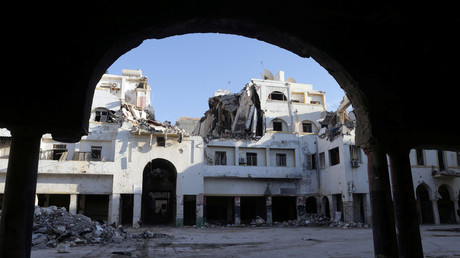Need better tech & more infowars: NATO fears lack of air superiority against ‘peer adversary’
Facing the prospect of fighting someone who might fight back, NATO has adopted a new air power strategy, short on specifics but long on calls for better technology, cyber and information warfare.
The document, published on Tuesday, calls joint air power (JAP) a “key instrument in achieving NATO’s three core tasks and other political objectives.” It is the first such document since the NATO naval strategy was formulated in 2011.
“For almost 70 years, airpower has been a core part of NATO’s military capabilities. From deterring the Soviet Union during the Cold War, to operations in the Balkans in the 1990s and the fight against international terrorism in the deserts of Afghanistan, air power has helped to protect our people and achieve our political objectives,” NATO spokesperson Oana Lungescu said in a statement.
The new strategy will “help ensure that allied air forces remain world class, flexible and ready for any possible contingencies,” Lungescu added.
The eleven-page document consists mostly of broad generalizations and is written in dry political and military language. Some of the contents, however, provide clues as to what NATO’s air priorities will be, going forward.
One of the first contingencies brought up in the strategy is the stark warning that “for the first time since the end of the Cold War, the Alliance has to be able to conduct operations against any peer-state actor.” As a result, the “future operating environment may be one in which air superiority can neither be assured at the onset of operations nor, once obtained, be an enduring condition.”
This is a marked contrast to the environment NATO has become accustomed to: Since 1991, the alliance has mostly fought targets with, at best, limited ability to fight back, from Bosnia in 1995 and Serbia in 1999, to Libya in 2011 and the ongoing operations in Afghanistan.
Though the document does not specifically name any adversaries, it is clear the “peer-state actor” phrasing is referring to Russia. NATO has been massing troops and equipment on the Russian border, especially in the Baltic states and Poland, since the crisis in Ukraine began in 2014. Parallel to the troop buildup, NATO officials have raised alarm about Russian air defenses’ capabilities for “Anti Access/Area Denial” (A2/AD, in military parlance). Meanwhile, NATO flyers have had a number of run-ins with their Russian colleagues in international airspace.
The ability to use air power for intelligence-gathering, threats of force, critical delivery of supplies and rapid attack is critical to NATO’s operation, the strategy says. To ensure its success, the alliance needs to invest in new technology, better training facilities, more and better bases, and “a robust and securely networked environment” secured from cyber interference.
Furthermore, there are “strong dependencies between JAP and national space-based capabilities, even though NATO neither owns nor controls them,” the document says, possibly referring to the US and European military space programs. The US is currently working on setting up the Space Force as an independent military branch.
Last, but not least, the strategy warns of likely “disinformation campaigns designed to distort or to malign the Alliance’s intent and/or quality of execution.” Adversaries might seek to limit air power through “claims of civilian casualties, or the exploitation of events involving civilian casualties,” says the document.
“NATO cannot afford to have its air power capabilities unnecessarily constrained and this makes it even more essential that the communications aspects are taken account of in planning and execution of air operations,” the strategy concludes.
This is pretty much directly a call-back to 1999, when NATO spokespeople struggled almost daily to explain the photos and videos of civilian casualties in Yugoslavia. At one point, the alliance reacted by bombing the Serbian state TV. NATO also presented the 78-day campaign as a great success in “degrading” the Yugoslav military, which emerged from the conflict almost unscathed – unlike the devastated civilian infrastructure.
Think your friends would be interested? Share this story!







Comments are closed.